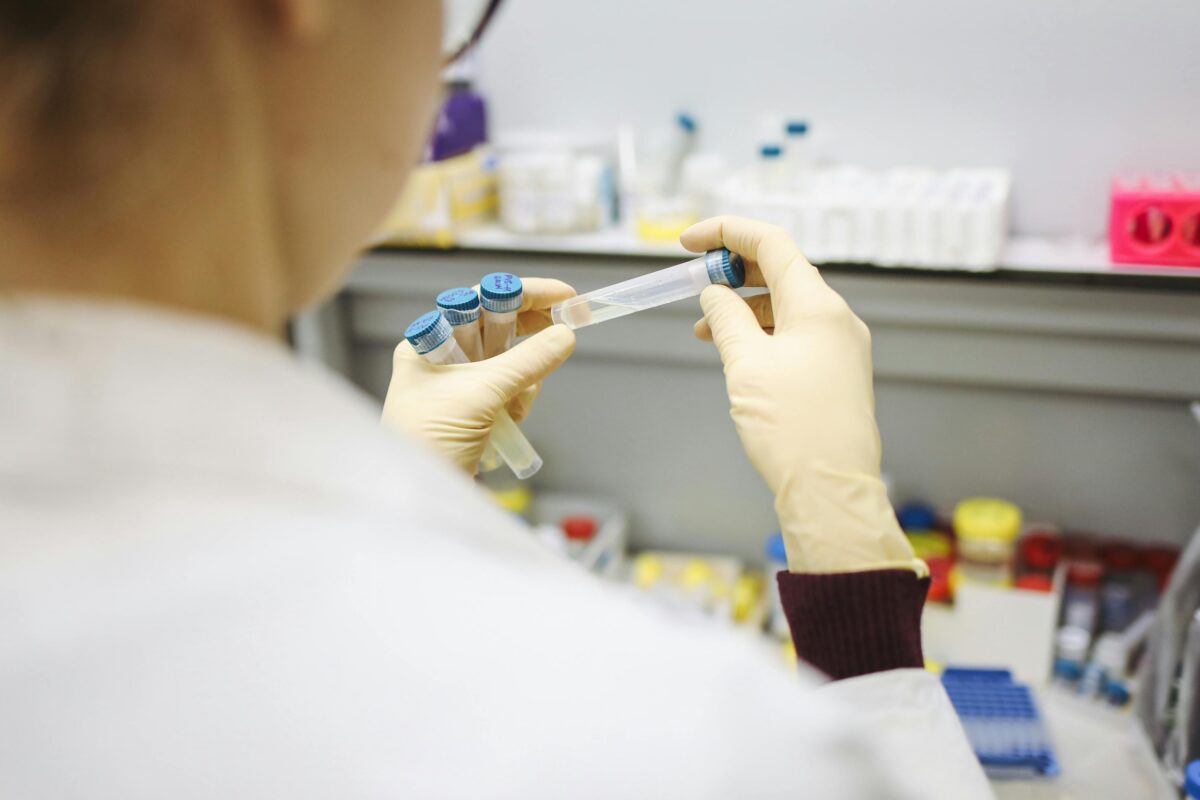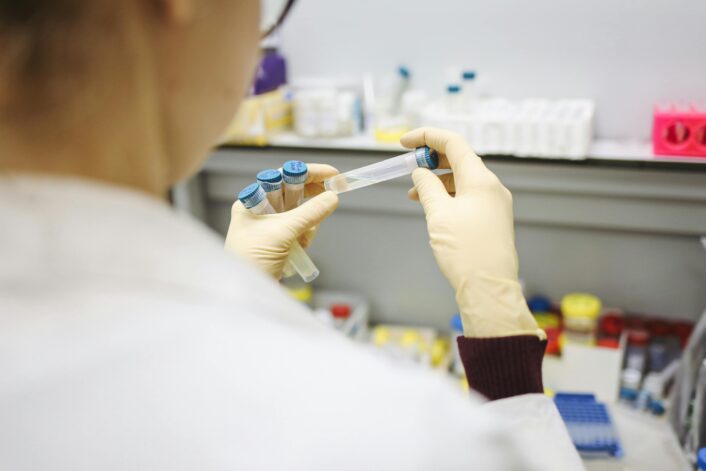SHMT Gene And The Methylation Cycle
harvey
on
May 24, 2024

Latest Posts
Table of Contents
SHMT Gene And The Methylation Cycle
Date of Content: May 23, 2024
Written by: Avanthika Nityanand
Reviewed by: Maarit Tiirikainen, PhD
The SHMT gene encodes the enzyme serine hydroxymethyltransferase, an enzyme essential for amino acid metabolism and nucleotide synthesis. This enzyme catalyzes the conversion of serine and tetrahydrofolate (THF) to glycine and 5,10-methylenetetrahydrofolate (5,10-MTHF). This reaction is essential for various biosynthetic processes, including the methylation cycle and the synthesis of the nucleotides, the DNA and RNA building blocks.
The SHMT enzyme supports also the production of thymidylate and purines, which are crucial for cell division and genetic stability. It contributes to the pool of methyl groups needed for methylation reactions that regulate gene expression and protein function. Genetic variations in the SHMT gene can affect itsenzyme activity, influencing folate metabolism, homocysteine levels, and overall cellular health. These variations are associated with cardiovascular diseases, neural tube defects, and certain cancers, underscoring the gene’s importance in maintaining metabolic balance and preventing disease.
Overview of the Methylation Cycle
The central theme of the methylation cycle is the conversion of homocysteine, a potentially harmful substance, to methionine, an essential amino acid. The methylation cycle helps keep your homocysteine levels in check. High homocysteine levels can lead to several health issues.
Here are the steps in the methylation cycle involving key enzymes and intermediates:
[1] Conversion of Serine to Glycine [we are here]
- Enzyme: Serine Hydroxymethyltransferase (SHMT)
- Reaction: Serine + Tetrahydrofolate (THF) → Glycine + 5,10-Methylenetetrahydrofolate (5,10-MTHF)
[2] Conversion of 5,10-MTHF to 5-MTHF
- Enzyme: Methylenetetrahydrofolate Reductase (MTHFR)
- Reaction: 5,10-Methylenetetrahydrofolate (5,10-MTHF) → 5-Methyltetrahydrofolate (5-MTHF)
[3] Conversion of Homocysteine to Methionine
- Enzyme: Methionine Synthase (MTR)
- Reaction: Homocysteine + 5-Methyltetrahydrofolate (5-MTHF) → Methionine + Tetrahydrofolate (THF)
- Coenzyme: Methionine Synthase Reductase (MTRR) keeps MTR active
[4] Alternative Pathway for Homocysteine to Methionine
- Enzyme: Betaine-Homocysteine Methyltransferase (BHMT)
- Reaction: Homocysteine + Betaine → Methionine + Dimethylglycine
[5] Conversion of Methionine to SAM
- Enzyme: Methionine Adenosyltransferase (MAT)
- Reaction: Methionine + ATP → S-Adenosylmethionine (SAM)
[6] Methylation Reactions
- SAM as Methyl Donor: SAM donates a methyl group to various substrates (DNA, RNA, proteins, lipids) and becomes S-Adenosylhomocysteine (SAH).
[7] Conversion of SAH to Homocysteine
- Enzyme: S-Adenosylhomocysteine Hydrolase (SAHH)
- Reaction: S-Adenosylhomocysteine (SAH) → Homocysteine + Adenosine
[8] Transsulfuration Pathway (Alternative route for homocysteine)
- Enzyme: Cystathionine Beta-Synthase (CBS)
- Reaction: Homocysteine + Serine → Cystathionine
- Subsequent Reaction: Cystathionine converts to cysteine and other metabolites.
Importance of Healthy Homocysteine Levels
Homocysteine levels are essential because elevated levels of homocysteine, a sulfur-containing amino acid, are associated with an increased risk of cardiovascular diseases, including coronary artery disease, stroke, and peripheral arterial disease. High homocysteine levels can damage the lining of arteries, promote blood clot formation, and increase oxidative stress, all of which contribute to the development and progression of atherosclerosis.
Additionally, elevated homocysteine is associated with other health issues such as cognitive decline, dementia, and certain birth flaws. Monitoring and managing homocysteine levels through diet, lifestyle changes, and, in some cases, medication can be crucial for maintaining cardiovascular health and preventing related complications.

Overview of the Methylation Cycle
The central theme of the methylation cycle is the conversion of homocysteine, the harmful substance, to methionine, an essential amino acid. The methylation cycle helps keep your homocysteine levels in check. As discussed in the earlier section, high homocysteine levels can lead to several health issues.
Here are the steps in the methylation cycle involving key enzymes and intermediates:
[1] Conversion of Serine to Glycine
- Enzyme: Serine Hydroxymethyltransferase (SHMT)
- Reaction: Serine + Tetrahydrofolate (THF) → Glycine + 5,10-Methylenetetrahydrofolate (5,10-MTHF)
[2] Conversion of 5,10-MTHF to 5-MTHF
- Enzyme: Methylenetetrahydrofolate Reductase (MTHFR)
- Reaction: 5,10-Methylenetetrahydrofolate (5,10-MTHF) → 5-Methyltetrahydrofolate (5-MTHF)
[3] Conversion of Homocysteine to Methionine [we are here]
- Enzyme: Methionine Synthase (MTR)
- Reaction: Homocysteine + 5-Methyltetrahydrofolate (5-MTHF) → Methionine + Tetrahydrofolate (THF)
- Coenzyme: Methionine Synthase Reductase (MTRR) keeps MTR active
[4] Alternative Pathway for Homocysteine to Methionine
- Enzyme: Betaine-Homocysteine Methyltransferase (BHMT)
- Reaction: Homocysteine + Betaine → Methionine + Dimethylglycine
[5] Conversion of Methionine to SAM
- Enzyme: Methionine Adenosyltransferase (MAT)
- Reaction: Methionine + ATP → S-Adenosylmethionine (SAM)
[6] Methylation Reactions
- SAM as Methyl Donor: SAM donates a methyl group to various substrates (DNA, RNA, proteins, lipids) and becomes S-Adenosylhomocysteine (SAH).
[7] Conversion of SAH to Homocysteine
- Enzyme: S-Adenosylhomocysteine Hydrolase (SAHH)
- Reaction: S-Adenosylhomocysteine (SAH) → Homocysteine + Adenosine
[8] Transsulfuration Pathway (Alternative route for homocysteine)
- Enzyme: Cystathionine Beta-Synthase (CBS)
- Reaction: Homocysteine + Serine → Cystathionine
- Subsequent Reaction: Cystathionine converts to cysteine and other metabolites.
SHMT Gene and the Methylation Cycle
The SHMT gene plays a critical role in the methylation cycle, a crucial biochemical pathway in DNA synthesis, repair, and gene regulation. The enzyme encoded by the SHMT gene, the serine hydroxymethyltransferase, catalyzes the conversion of serine and tetrahydrofolate (THF) to glycine and 5,10-methylenetetrahydrofolate (5,10-MTHF). This reaction is integral to one-carbon metabolism, which provides the necessary methyl groups for the methylation cycle.
Role of the SHMT Gene in the Methylation Cycle
Production of 5,10-Methylenetetrahydrofolate (5,10-MTHF)
The SHMT enzyme produces 5,10-MTHF andis a crucial intermediate that sets off the methylation cycle. 5,10-MTHF is essential for synthesizing nucleotides for DNA replication and repair.
Regeneration of Methionine from Homocysteine
In the methylation cycle, homocysteine converts back to methionine using methyl groups provided by 5-methyltetrahydrofolate (5-MTHF), derived from 5,10-MTHF. This step is critical for maintaining adequate levels of methionine and S-adenosylmethionine (SAM), the body’s primary methyl donor.
Support for Methylation Reactions
SAM, produced from methionine, is used in numerous methylation reactions, including DNA methylation, which regulates gene expression, as well as the methylation of proteins and lipids. The proper functioning of the SHMT enzyme ensures a steady supply of one-carbon units needed for these reactions.
Interplay with Folate Metabolism
The SHMT gene links the folate cycle with the methylation cycle. Folate (B9), in the form of THF, is required for the SHMT enzyme to produce 5,10-MTHF. Adequate folate levels are thus necessary for the proper function of the methylation cycle and overall cellular health.
Implications of SHMT Gene Polymorphisms
The SHMT1 gene C1420T polymorphism (rs1979277 C>T/G>A), which involves a change from cytosine (C) to thymine (T) at position 1420 in the SHMT1 gene, can impact health in several ways due to its role in one-carbon metabolism and the methylation cycle. Here are the key health impacts associated with this polymorphism:
Folate Metabolism
The serine hydroxymethyltransferase enzyme, encoded by the SHMT gene, converts serine and tetrahydrofolate (THF) to glycine and 5,10-methylenetetrahydrofolate (5,10-MTHF). This reaction is crucial for maintaining proper folate (B9) metabolism. The presence of the T allele at the SHMT1 C1420T locus may influence the enzyme’s efficiency, potentially altering folate levels in the body.
Homocysteine Levels
The T-allele of the SHMT C1420T polymorphism is associated with higher homocysteine levels, which is a risk factor for cardiovascular and neurodegenerative diseases. This increase in homocysteine levels suggests that individuals with the T-allele may have a higher demand for folate to maintain normal homocysteine metabolism and prevent hyperhomocysteinemia.
Vitamin B12 Interaction
In vitamin B12 metabolism, the SHMT C1420T polymorphism may interact with other genetic factors and vitamin levels to influence health outcomes. Adequate intake of folate and vitamin B12 is essential to mitigate the potential unfavorable effects of this polymorphism.
Genotype-Specific Health Management
Individuals with the SHMT1 1420T allele (rs1979277-A) may benefit from personalized health management strategies, including dietary adjustments to ensure sufficient folate and vitamin B12 intake, regular monitoring of homocysteine levels, and preventive measures for cardiovascular and neurodegenerative diseases.
Get your LifeDNA Methylation Genes report to understand your SHMT and other methylation gene polymorphisms in detail.
Optimize Your Homocysteine Levels Naturally
To optimize homocysteine levels through diet, focus on the following strategies:
- Increase Folate (Vitamin B9) Intake: Leafy greens (spinach, kale), legumes (beans, lentils), fruits (oranges, bananas), fortified cereals. Folate helps convert homocysteine into methionine, reducing its levels.
- Boost Vitamin B12 (Cobalamin) Intake: Meat (beef, chicken), fish (salmon, tuna), dairy products (milk, cheese), fortified plant-based milk or cereals. Vitamin B12 is crucial for converting homocysteine into methionine, helping to lower homocysteine levels.
- Consume More Vitamin B6 (Pyridoxine): Poultry (chicken, turkey), fish (salmon, tuna), potatoes, bananas, and fortified cereals. Vitamin B6 helps convert homocysteine to cysteine, another amino acid, lowering homocysteine levels.
- Increase Riboflavin (Vitamin B2) Intake: Dairy products (milk, yogurt), eggs, lean meats, green leafy vegetables, and fortified cereals. Riboflavin supports the activity of enzymes involved in homocysteine metabolism.
- Ensure Adequate Choline Intake: Eggs, beef liver, chicken, shrimp, and soybeans. Choline helps produce betaine, which aids in converting homocysteine to methionine.
- Limit Alcohol Consumption: Alcohol can impair the function of enzymes involved in homocysteine metabolism and exacerbate high homocysteine levels.
- Include Antioxidant-Rich Foods: Fruits (berries, oranges), vegetables (broccoli, bell peppers), nuts, and seeds. Antioxidants can help protect against oxidative stress, which may be high with homocysteine levels.
- Consider Omega-3 Fatty Acids: Fatty fish (salmon, mackerel), flaxseeds, chia seeds, and walnuts. Omega-3 fatty acids tend to lower homocysteine levels and improve heart health.
Incorporating these nutrient-rich foods into your diet can help maintain healthy homocysteine levels and support overall cardiovascular health. Always consult with a healthcare professional before making significant changes to your diet or starting new supplements.
References
Customer Reviews




*Understanding your genetics can offer valuable insights into your well-being, but it is not deterministic. Your traits can be influenced by the complex interplay involving nature, lifestyle, family history, and others.
Our reports have not been evaluated by the Food and Drug Administration. The contents on our website and our reports are for informational purposes only, and are not intended to diagnose any medical condition, replace the advice of a healthcare professional, or provide any medical advice, diagnosis, or treatment. Consult with a healthcare professional before making any major lifestyle changes or if you have any other concerns about your results. The testimonials featured may have used more than one LifeDNA or LifeDNA vendors’ product or reports.
- Category: Methylation



